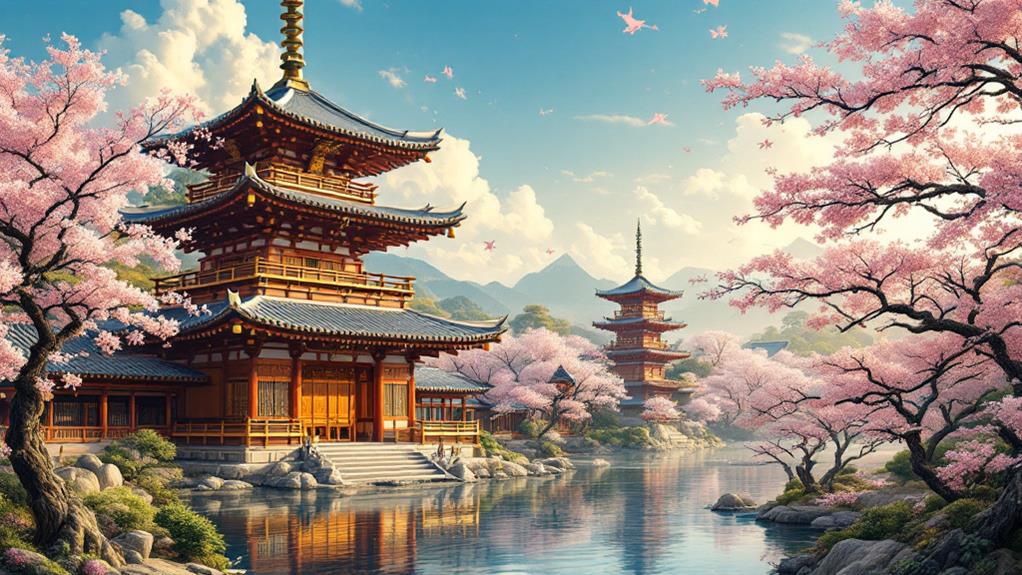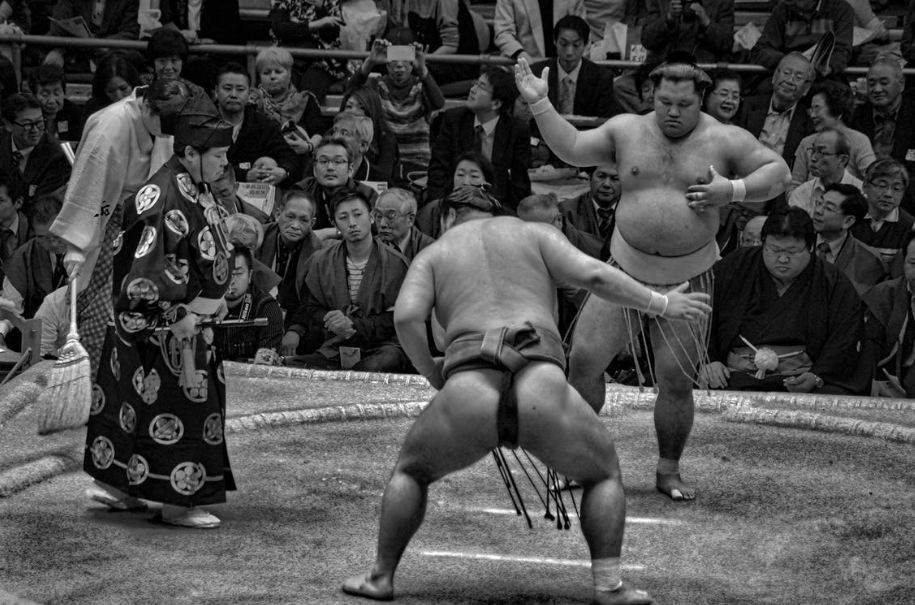What Happened to Japanese Culture When Empress Suiko and Prince Shotoku Came Into Power in 593?

When Empress Suiko and Prince Shotoku took power in 593, Japan underwent a cultural renaissance. You'd see Buddhism flourish with new temples and teachings blending with Shinto rituals. They introduced Confucian principles, creating a structured and respectful society. Embracing Chinese art and architecture, they transformed Japan's aesthetic landscape. Even the written language evolved with the adoption of kanji. Legal reforms like the Seventeen-Article Constitution centralized power and guaranteed efficient governance. This period's mix of foreign influences and homegrown traditions helped shape a unified national identity. There's much more to this fascinating cultural transformation waiting to be uncovered.
Rise of Buddhism
During the reign of Empress Suiko and Prince Shotoku, Buddhism began to flourish in Japan, marking a significant cultural transformation. You'd find that Buddhist texts were imported from China and Korea, serving as crucial tools for religious education and practice. These texts didn't just enrich individual spirituality; they laid the groundwork for establishing monastic communities across the country. Imagine entering these communities, where monks and nuns dedicated their lives to studying and disseminating the teachings of Buddhism, creating sanctuaries of learning and meditation. In this period, there was also an appreciation for the interconnectedness of Japanese cultural practices, as seen in how martial arts like Kyudo emphasized discipline and mindfulness, echoing Buddhist principles. Cultural syncretism played a fundamental role in this period as well. You'd notice how Buddhism didn't replace Shinto beliefs but rather blended with them, enriching Japan's spiritual tapestry. This fusion led to unique expressions of religious practice and art, which became distinctly Japanese. Religious festivals began to reflect this syncretism, combining elements from both belief systems. During these festivals, you'd experience a lively mix of rituals, dances, and offerings that brought communities together in celebration. The rise of Buddhism under Empress Suiko and Prince Shotoku wasn't just about adopting a new faith; it transformed Japan's cultural identity, shaping its future.
Adoption of Chinese Models

As Buddhism began to weave into the fabric of Japanese culture, Empress Suiko and Prince Shotoku looked beyond for more influences, turning their gaze towards China. You'd see them actively engaging in cultural exchange, seeking to improve and refine Japanese society by adopting Chinese models. This wasn't just about aesthetics; it signified a deeper transformation that would shape Japan's identity. Prince Shotoku, a visionary leader, recognized the value of Confucian influence and incorporated its principles into their governance and educational systems. Confucian ideals, emphasizing hierarchy, respect, and duty, began permeating Japanese society. You'd notice how these principles fostered a more structured and harmonious environment, essential for a nation on the path to unification. Moreover, the integration of cultural values into education, a practice seen in modern Japanese schooling, can be traced back to these influences. Furthermore, you'd find that Chinese art, architecture, and literature became highly regarded, inspiring new creations that blended Chinese sophistication with Japanese tradition. The adoption of Chinese writing systems, such as kanji, allowed for more complex communication and record-keeping. By embracing these models, Empress Suiko and Prince Shotoku laid the groundwork for a cultural evolution, ensuring that Japan wouldn't just imitate China but would adapt and build upon these influences to forge a unique cultural identity.
Legal Reforms and Governance

How did Empress Suiko and Prince Shotoku revolutionize Japan's legal and governance systems? They recognized the need for a more structured political environment and took decisive steps to reshape it. They introduced the Seventeen-Article Constitution in 604, a pioneering document that laid the foundation for Japan's legal systems. This constitution wasn't just a set of laws; it was a guide for moral and political conduct, emphasizing harmony, respect for authority, and diligent work.
By adopting elements from China's sophisticated political structure, they initiated profound changes in how governance operated. They centralized power, reducing the influence of local clans, which had dominated the political landscape. This move was essential in creating a unified state where the central government held supreme authority.
Prince Shotoku's reforms also included the establishment of a merit-based system for selecting officials, ensuring that those in power were capable and committed to their roles. This step was imperative in creating a more efficient and stable administration. Through these reforms, Empress Suiko and Prince Shotoku effectively transformed Japan's governance, laying the groundwork for a more cohesive and organized society that could adapt and grow with the times.
Architectural and Artistic Advances

Witness the transformation of Japan's cultural landscape under Empress Suiko and Prince Shotoku through groundbreaking architectural and artistic advances. During this period, temple construction flourished, marking a notable shift in Japanese architecture. You can see the influence of Buddhism, which both leaders embraced, in the majestic structures that began to dot the landscape, with the Horyu-ji Temple being a prime example. This temple, completed in the early 7th century, stands as a representation of their inventive approach.
Artistic patronage under Empress Suiko and Prince Shotoku also saw a remarkable enhancement. They fostered a rich environment for artists, encouraging the creation of intricate sculptures and paintings that blended native styles with continental influences. This time's advancements laid the foundation for future artistic endeavors, highlighting the importance of cultural exchange.
Key developments during this transformative period included:
- Adoption of Chinese architectural styles: These styles influenced the design of Japanese temples.
- Introduction of Buddhist iconography: This became prevalent in artwork and sculptures.
- Integration of foreign techniques: New methods in art and construction were adopted.
- Support for artists and artisans: This patronage led to a flourishing of creativity.
These advances notably shaped Japan's cultural evolution.
Formation of National Identity

During the reign of Empress Suiko and Prince Shotoku, Japan's national identity began taking shape through a blend of cultural influences and political reforms. You'd see how they accepted Buddhism and Confucianism while preserving native Shinto practices, creating a cultural synthesis that added depth to Japan's emerging identity. By adopting elements from China and Korea, they didn't just import ideas but adapted them in ways that suited Japan's unique context. This synthesis wasn't a mere copying; it was an inventive merging that laid the foundation for a distinct Japanese ethos.
Social cohesion played a vital role in this formation. Prince Shotoku's implementation of the Seventeen-Article Constitution in 604 was a significant step. It encouraged harmony and ethical governance, emphasizing the importance of unity and cooperation among people. You'd notice how these principles fostered a collective sense of belonging and purpose, essential for a cohesive society. As Japan started to centralize power, the emphasis on social cohesion helped bridge regional differences, bringing people together under a shared national identity. This period of transformation wasn't just about politics; it was about creating a unified spirit that would endure through centuries.



